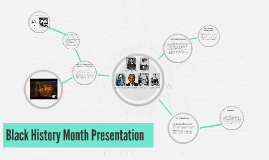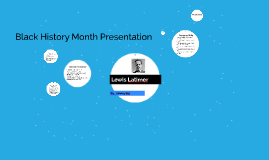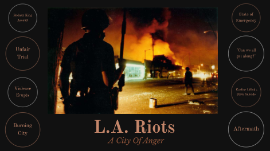Black History Month Presentation
Transcript: Honors and Tributes By: Edwin Victor Continued Later Years From 1897-1900 Woodson taught at Winona high school in Fayette county. In 1900, he was selected as principal of Douglass high school. He later received a Bachelor of literature degree from Berea college in 1903 by taking part time classes between the years of 1901-1903 Mr. Woodson was born on December 19, 1875 in New Canton, Virginia. He was the son of former slaves James and Eliza Riddle Woodson. He grew up in a poor family so regularly attending school was not an option for him, therefore he mastered the fundamentals of common school at the age of 17 through self instruction. Early Life Historian/Educator In 1926, Woodson received the National Association for the Advancement of Colored People Spingarm Medal. The U.S. Postal Service issued a 20 cent stamp honoring Woodson in 1984. In 1992, the Library of Congress held an exhibition entitled "Moving Back Barriers: The Legacy of Carter G. Woodson". Woodson had donated his collection of 5,000 items from the 18th, 19th, and 20th centuries to the Library. His Washington, D.C. home has been preserved and designated the Carter G. Woodson Home National Historic Site. In 2002, scholar Molefi Kete Asante named Carter G. Woodson on his list of 100 Greatest African Americans Woodson moved to Fayette County to work as a coal miner in which he was only able to devote a few months a year to eduction, At the age of 20, Woodson entered Douglass high school where he received his diploma in less than two years. He was convinced that African American history was being ignored/misinterpreted therefore he created the Association for the study of Negro life and history in 1915. He believed awareness of such topics would reduce racial tensions between blacks and whites. He wrote a few books as well, one of which was "A Century of Negro Migration" which continues to be published by the Association for the Study of African American Life and History. Woodson also became a part of the NAACP Washington D.C. branch in 1915. Continued Education Carter G. Woodson Black History Month Presentation Career From 1903-1907 Woodson was a school supervisor in the Phillipines. He later attended the University of Chicago in 1908 where he was awarded an A.B. and A.M. in 1908 After that he completed his PhD IN History at Hardvard University in 1912, (The second African American to receive a PhD from Hardvard University). He continued teaching in public schools and later joined the faculy at Howard University as a professor where he served as the dean of the college of arts and sciences.

















